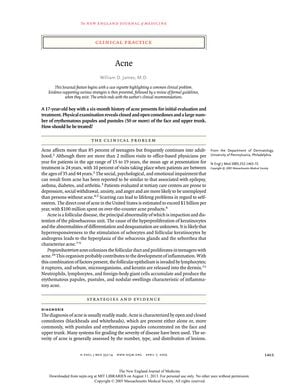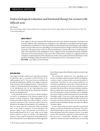Acne
April 2005
in “
The New England Journal of Medicine
”

TLDR Acne affects most teenagers and can continue into adulthood, with various treatments available that show improvement but have concerns like antibiotic resistance and side effects.
The 2005 article from the New England Journal of Medicine discussed acne as a prevalent condition affecting over 85% of teenagers and persisting into adulthood, with significant social and emotional impacts. It described acne as a follicular disease with contributions from androgens and Propionibacterium acnes. Various treatments were reviewed, including topical retinoids, antimicrobials like benzoyl peroxide, combination therapies, oral antibiotics for moderate-to-severe cases, hormonal agents for women, and isotretinoin for severe cases. The article noted a 50 to 60 percent improvement with oral antibiotics, but raised concerns about antibiotic resistance. Hormonal therapy showed a 30 to 60 percent reduction in lesions, while isotretinoin was highly effective but had serious side effects. The need for more randomized controlled trials was emphasized to guide therapy choices, and a combination of topical and oral therapy was recommended for moderately severe acne.


